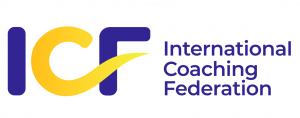Listening as the Foundation of True Inclusion: A New Paradigm

Inclusion has been a central focus for me over the years, beginning with gender and later expanding into generational inclusion across various large organizations. Through this journey, I’ve witnessed firsthand the unconscious mechanisms people employ, often driven by a binary mindset of “same” versus “different.” This binary logic stands in the way of true inclusion and must be dismantled if we want to unlock the real benefits it can bring to individuals, teams, and organizations alike.
The Comfort of Familiarity in Management
Management teams are frequently built around affinity—people naturally gravitate toward those who share similar interests and viewpoints. These familiar dynamics make collaboration easier, as messages and goals are shared seamlessly within like-minded groups. However, this preference for familiarity stifles diversity and limits innovation, creating environments where those who don’t fit neatly into the established norms are unintentionally excluded.
The Need for a Paradigm Shift
It has become increasingly clear that the long-standing “in/out” dynamic—where people are categorized based on their similarities and differences—needs to be overhauled. Our global society, more than ever, requires inclusive approaches that embrace diversity in all its forms. Unfortunately, the deeply ingrained nature of these exclusionary behaviors, rooted in our evolutionary history, makes this shift difficult. Changing them requires time, determination, and widespread effort to create positive reinforcements that can accelerate the collective transformation needed for genuine inclusion.
The challenge is that these ingrained responses influence everything from our neurological systems to our biochemical reactions, making transformation a slow process. We must generate broad consensus and build momentum to catalyze these changes across societies, cultures, and organizations.
Stereotypes and Biases: The Hidden Barriers
At the heart of these exclusionary behaviors are stereotypes and biases. Stereotypes are oversimplified beliefs about groups of people, while biases are the effects of these stereotypes, influencing decisions, communication, and relationships across all settings. Despite the rational desire to move beyond these outdated perceptions, they remain deeply embedded in our interactions, whether in the workplace, social settings, or personal relationships.
Moving from Diversity to Uniqueness
The first significant shift we must embrace is abandoning the traditional diversity framework based on categorizing people into rigid groups, and instead, celebrating each person’s unique identity. After all, we are all individuals with our own experiences, skills, and perspectives.
By valuing uniqueness over predefined categories, we can start to create a world where people are not only accepted but valued for their individuality. This shift would generate new belief systems that transcend outdated categories like gender, age, or sexual orientation. It would encourage a more inclusive approach, where everyone is seen as a “treasure to be discovered,” creating an atmosphere of respect and curiosity for each other’s uniqueness.
The Crucial Role of Listening in Inclusion
For this transformation to occur, we need to first change the way we listen. Genuine listening is the foundation of inclusion. Without it, there can be no meaningful exchange of ideas, no collaborative learning, and no innovation. We must listen not just to respond or confirm our expectations but to understand and appreciate the uniqueness of the person speaking.
Otto Scharmer’s model of the four levels of listening offers valuable insight into how we can shift our listening practices to foster inclusion:
- Downloading: Listening to confirm what we already know.
- Factual Listening: Listening for surprises or unexpected information that challenges our assumptions.
- Empathic Listening: Putting ourselves in someone else’s shoes, allowing us to see the world from their perspective.
- Generative Listening: Creating a space for new ideas and possibilities to emerge through our interaction.
Most of us spend our lives practicing the first two types of listening—downloading and factual listening. These are focused on reinforcing our worldview rather than opening up to new perspectives. To foster true inclusion, we must move beyond these modes and train ourselves in empathic listening, which enables us to understand the experiences and perspectives of others deeply. This sets the stage for generative listening, where collaboration and innovation can truly thrive.
Practical Tips for Better Listening
Improving listening skills requires conscious effort. Here are three key strategies to help cultivate a more inclusive and generative listening practice:
- Stay Present: Focus on the person speaking, setting aside distractions and preconceived thoughts.
- Slow Down: Practice patience and allow for pauses in conversation. This gives people the space to think and share more deeply.
- Delay Judgment: Listen with the intention of understanding, not judging. Approach each conversation with an open mind.
Empathy: The Starting Point for Inclusion
Empathy is the gateway to deeper understanding and meaningful inclusion. By listening empathetically, we can begin to grasp people’s mental models—their unique way of seeing the world. This understanding allows us to create environments where individuals feel valued, heard, and motivated to contribute, fostering a sense of belonging not only in the workplace but in every aspect of society.
Inclusion is not a destination but an ongoing process that starts with listening. By adopting new paradigms that embrace uniqueness and practicing deeper levels of listening, we can build a world where everyone feels valued and empowered to contribute.
Conclusion: Listening as the Path to Transformation
True inclusion starts with listening—not just any kind of listening, but listening that is rooted in curiosity, empathy, and openness to new possibilities. By moving away from a binary, exclusionary mindset and embracing the uniqueness of every individual, we can create organizations and societies that are more innovative, collaborative, and inclusive. The change may take time, but it is a transformation worth striving for—because the future depends on it.





